Reclaimed Timbers
Distinguished Boards and Beams maintains a wide selection of reclaimed barn wood timbers from heritage structures across North America. A variety of patina-clad original surface textures are available in both hardwoods and softwoods. We are also equipped with a state of the art milling facility to meet your individual project needs. Reclaimed timbers come with three different original patina surface textures.
Original Patina Surface Textures
Hawn Hewn
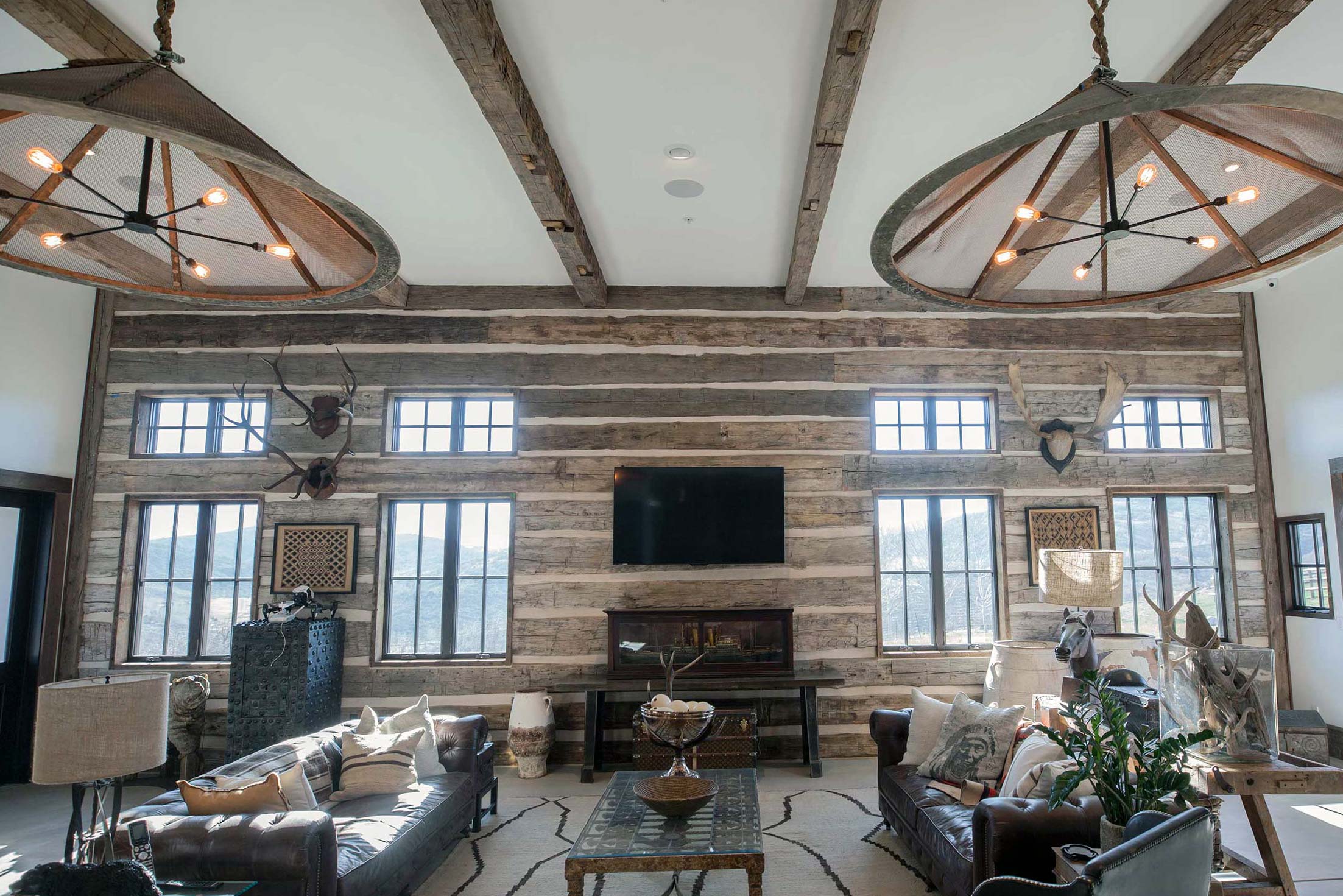
Smooth Planed
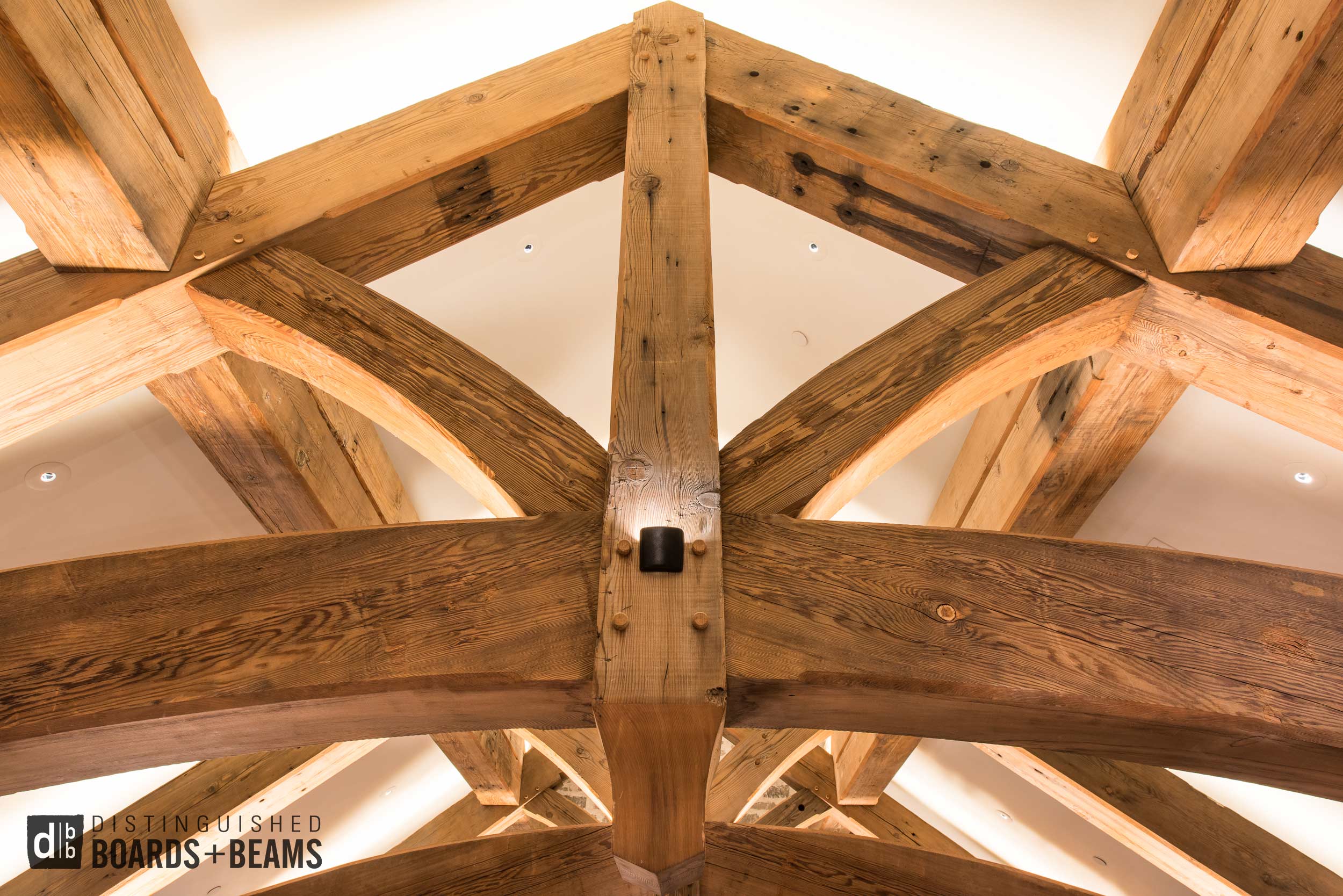
Rough Sawn
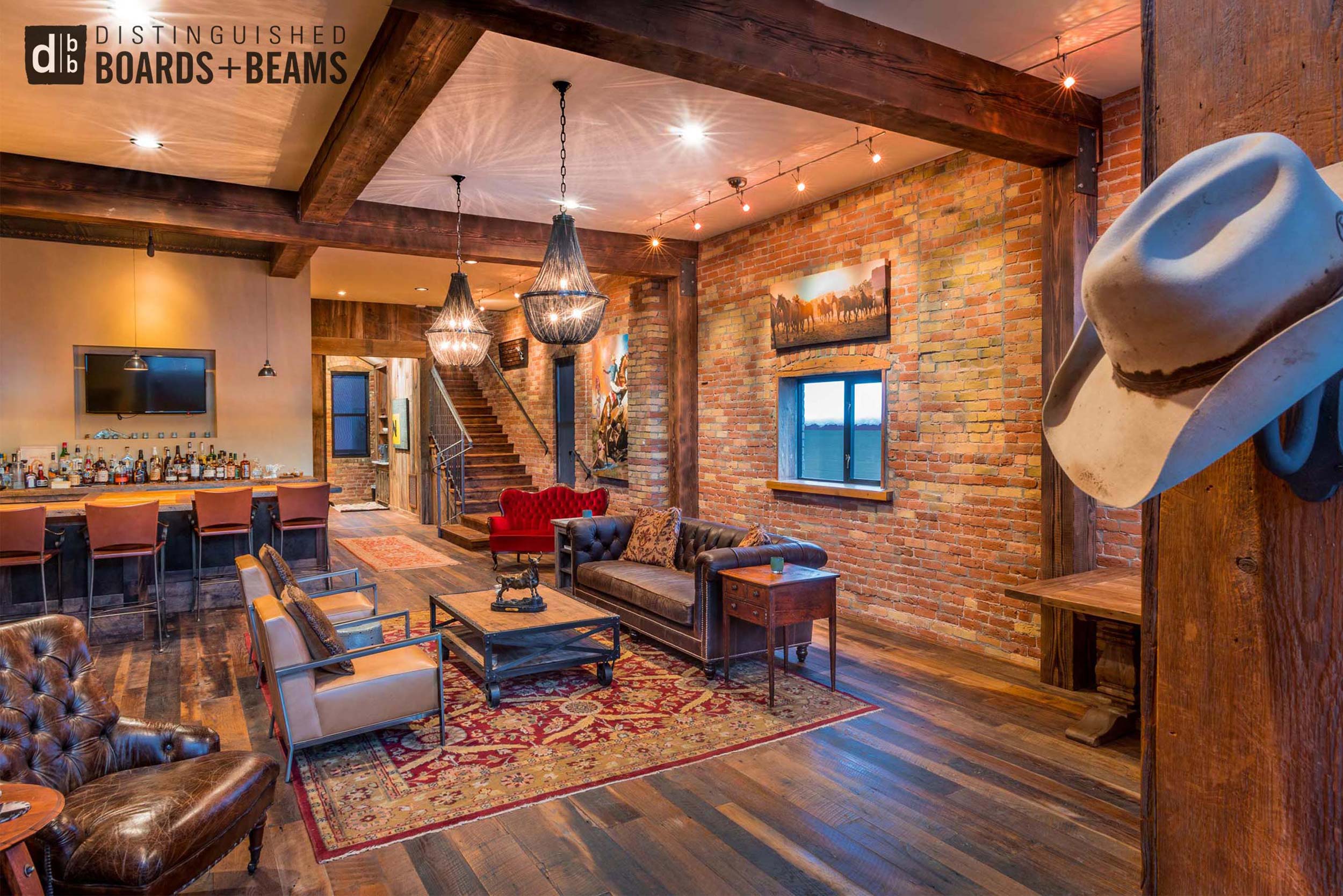
Hand Hewn Timbers and Beams
Hand hewn timbers and beams are some of the most coveted wood products in the world. Staggered score marks on a timber's surface from where an axe chipped the log’s round edges away and visual reminders of early construction techniques such as mortise pockets and dowel holes bring unmatched character to residential and commercial buildings. These timbers recall our agrarian past before the advent and widespread usage of sawmills. The sweat that went into each of these fine pieces of American history can be seen in the rustic, unique, and elegant texture of each timber.
We stock hand hewn oak, ash, elm, beech, and poplar hardwoods. For softwoods, we have heart pine, yellow pine, northern white pine, and tamarack. Very few hand-hewn Douglas fir beams exist. We periodically have other species in our inventory and can accommodate special orders.
Hand hewn timbers are generally square, and the most common sizes are 7”x7”, 8”x8”, 9”x9”, and 10”x10”. We also regularly stock larger and smaller dimensions. Lengths can vary from 6ft all the way to 40ft, and occasionally even longer.
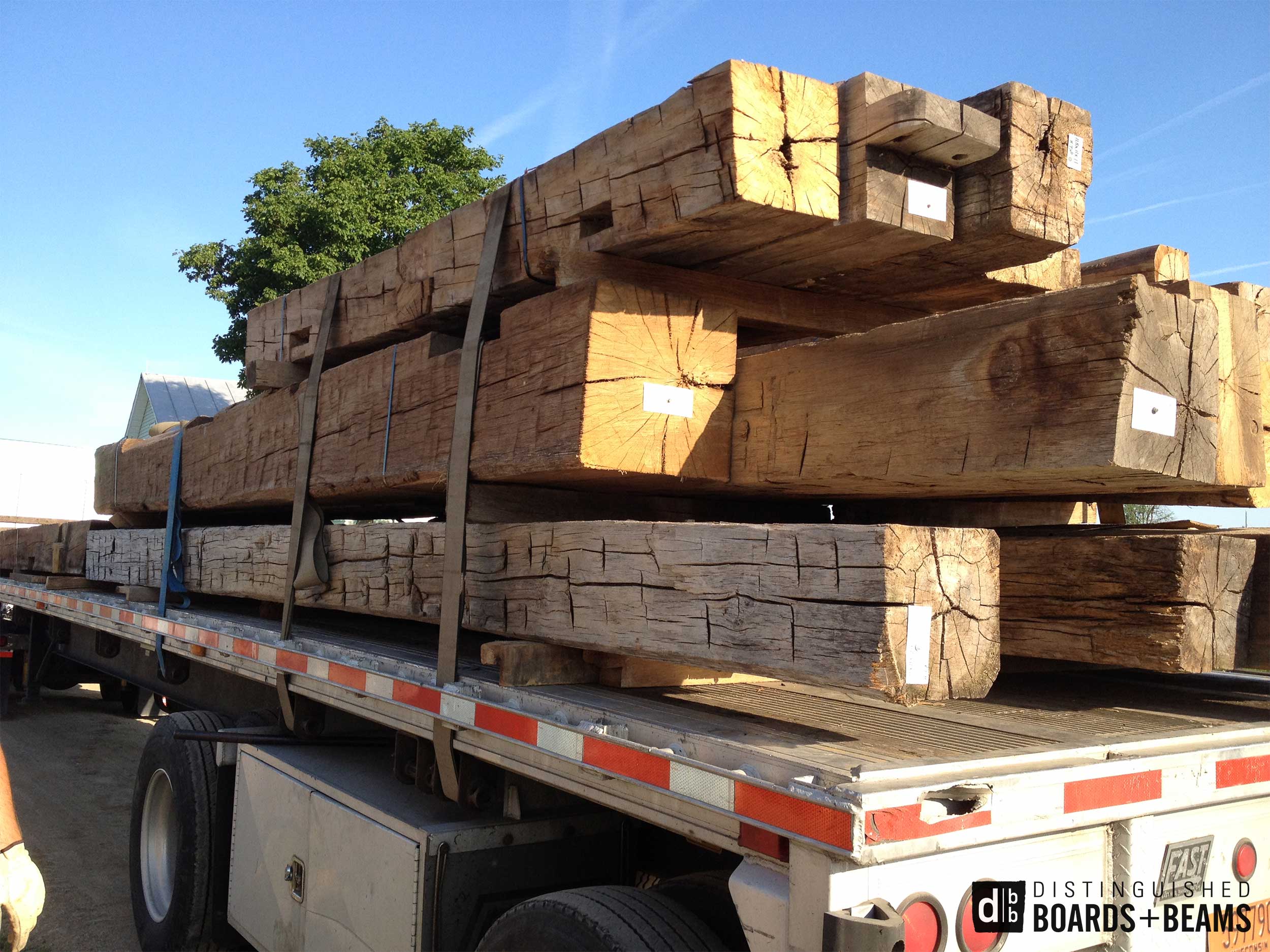
Species
We stock hand hewn oak, ash, elm, beech, and poplar hardwoods. For softwoods, we have heart pine, yellow pine, northern white pine, and tamarack. Very few hand-hewn Douglas fir beams exist.
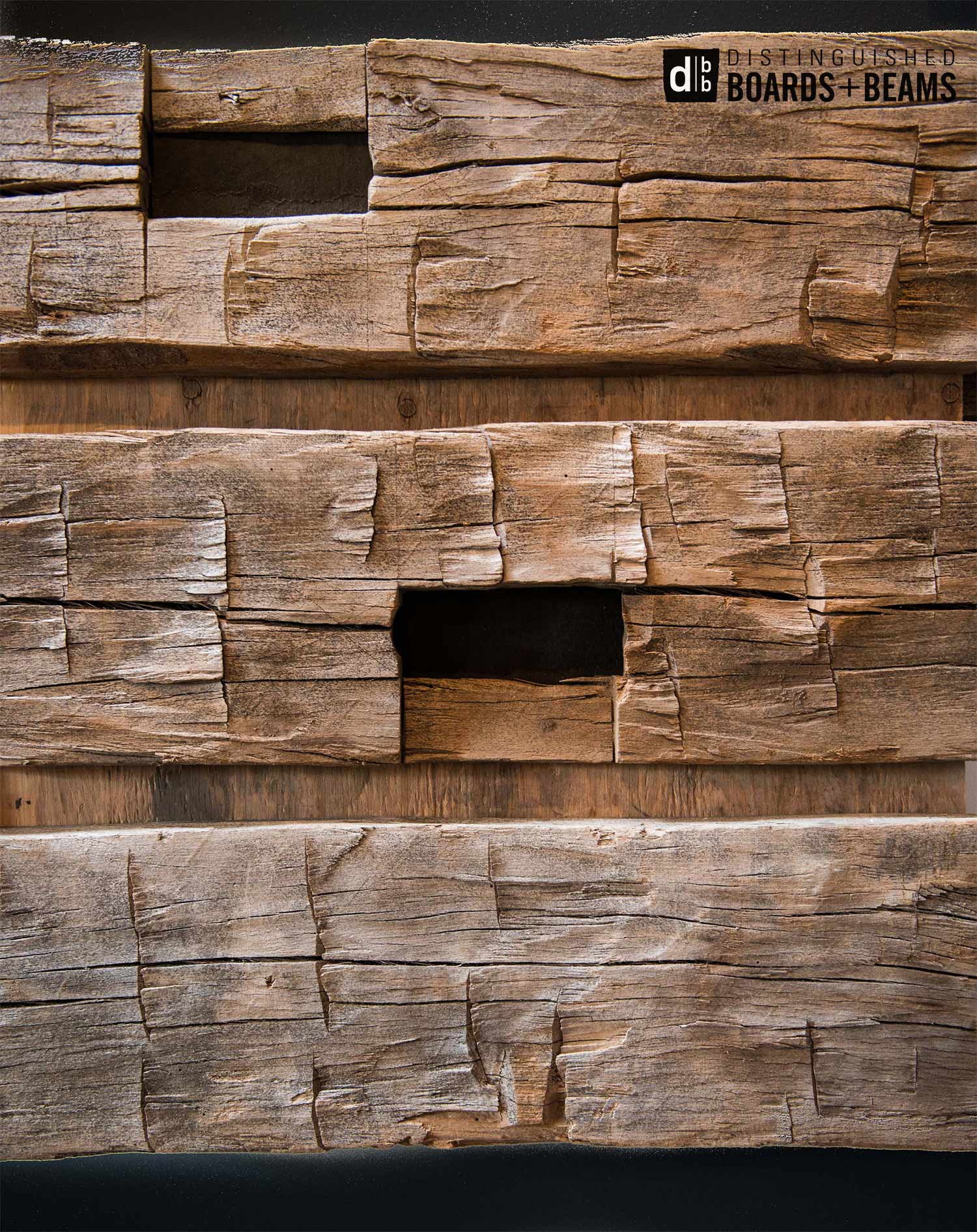
Texture
Staggered score marks on a timber's surface from where an axe chipped the log’s round edges away and visual reminders of early construction techniques such as mortise pockets and dowel holes bring unmatched character to residential and commercial buildings.
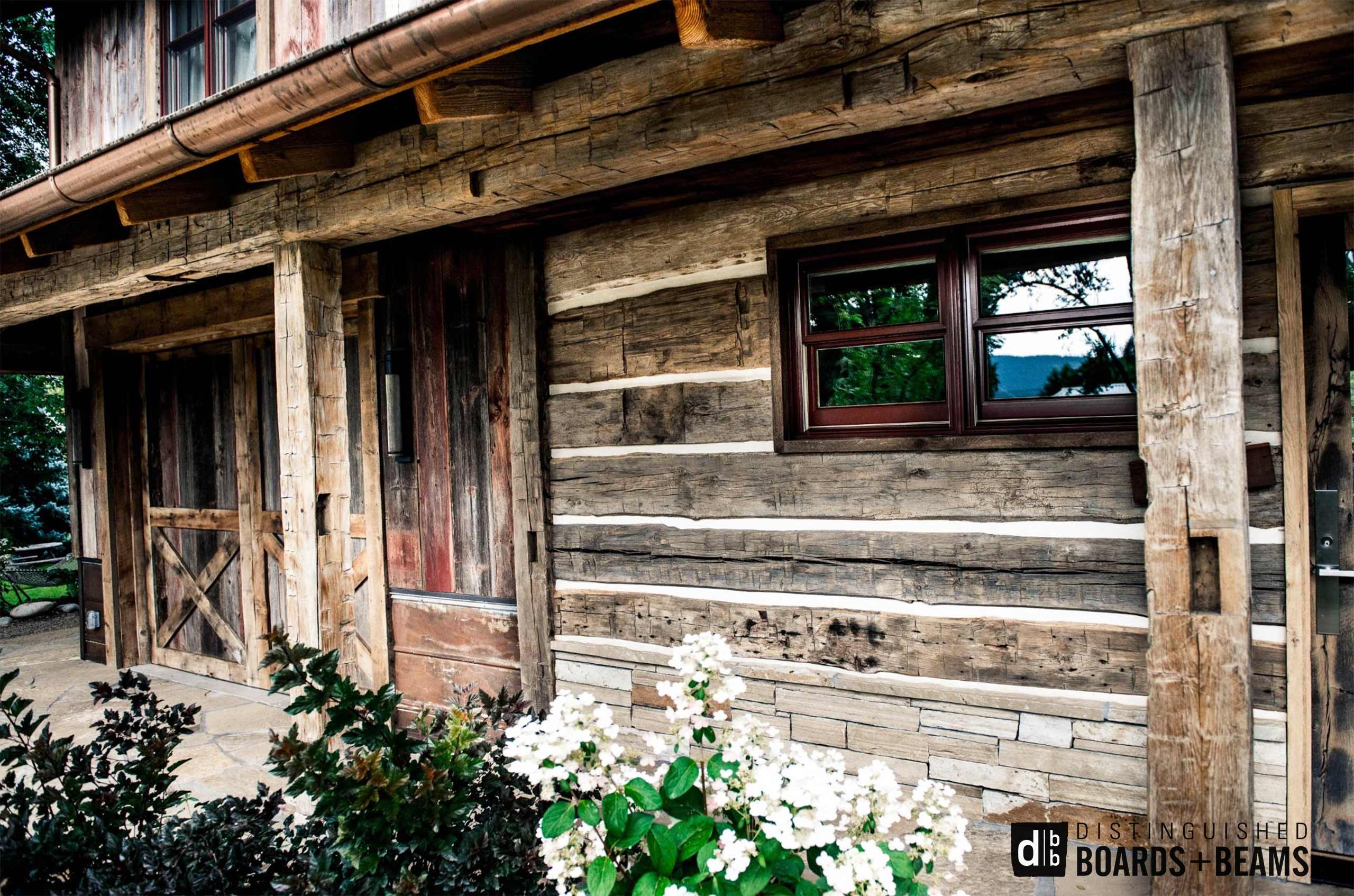
Usability
Hand hewn timbers are used in a variety of applications, including structural interior and exterior timbers and beams, timber-framed architecture, daubed hand hewn slab siding, and features such as mantles and tabletops.
Douglas Fir Timbers
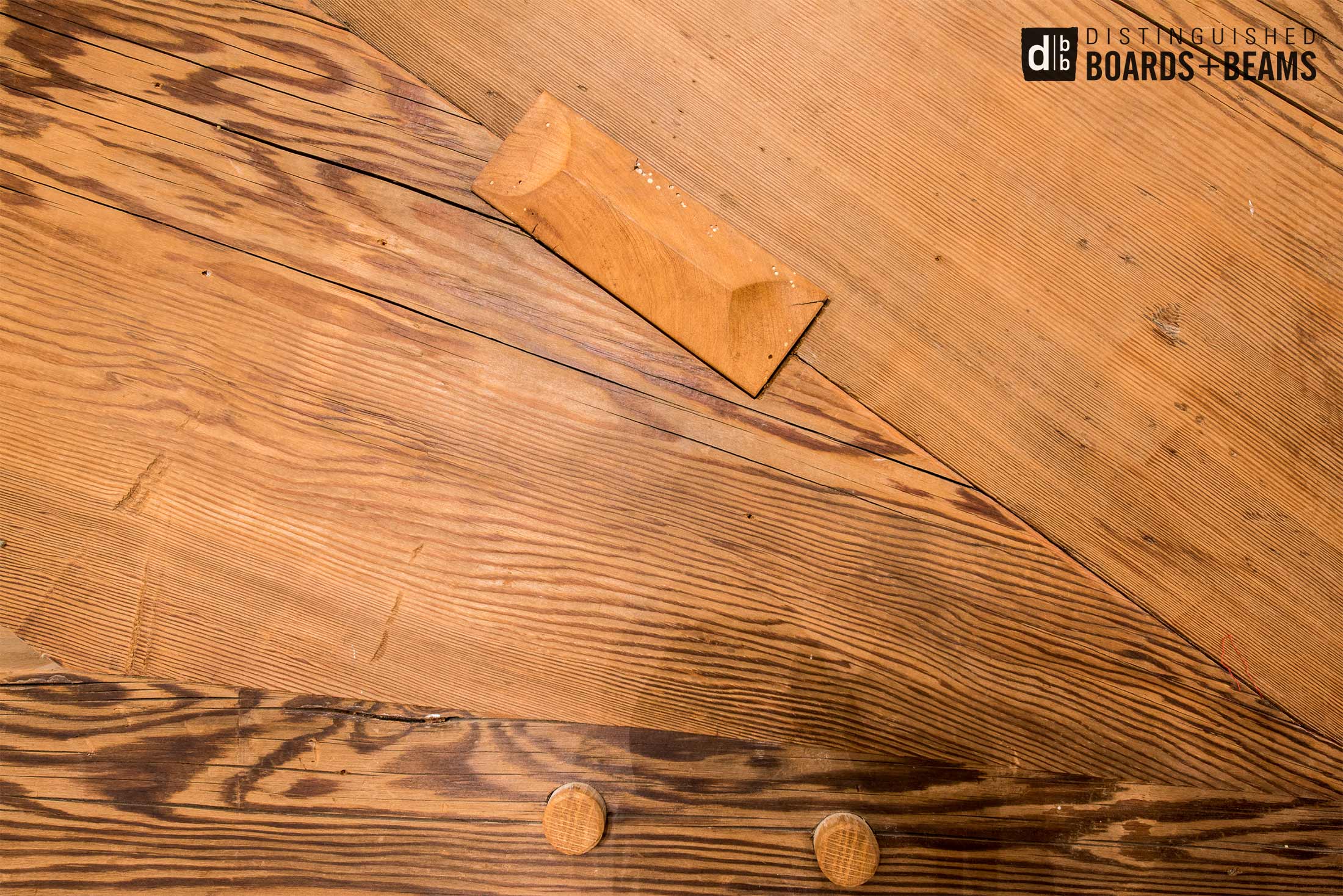
Old Growth Aesthetics
Handsome old growth grain patterns and extraordinarily tight rings with stunning wood hues ranging from red to golden brown. Naturally air-dried timber resins enhace the look with what can be described as an "inner glow" to the wood tones.

Amazing Usability
Reclaimed Douglas fir timbers are chosen over newly milled Douglas fir for more than just their handsome appearance. The wood’s natural high strength to weight ratio is enhanced by decades of natural air drying, virtually eliminating any chance of movement after installation. Since many reclaimed timbers were harvested in times when old growth trees were readily available, dimensions are much greater than freshly cut wood—large enough to saw free of heart center (FOHC) in massive lengths and widths.
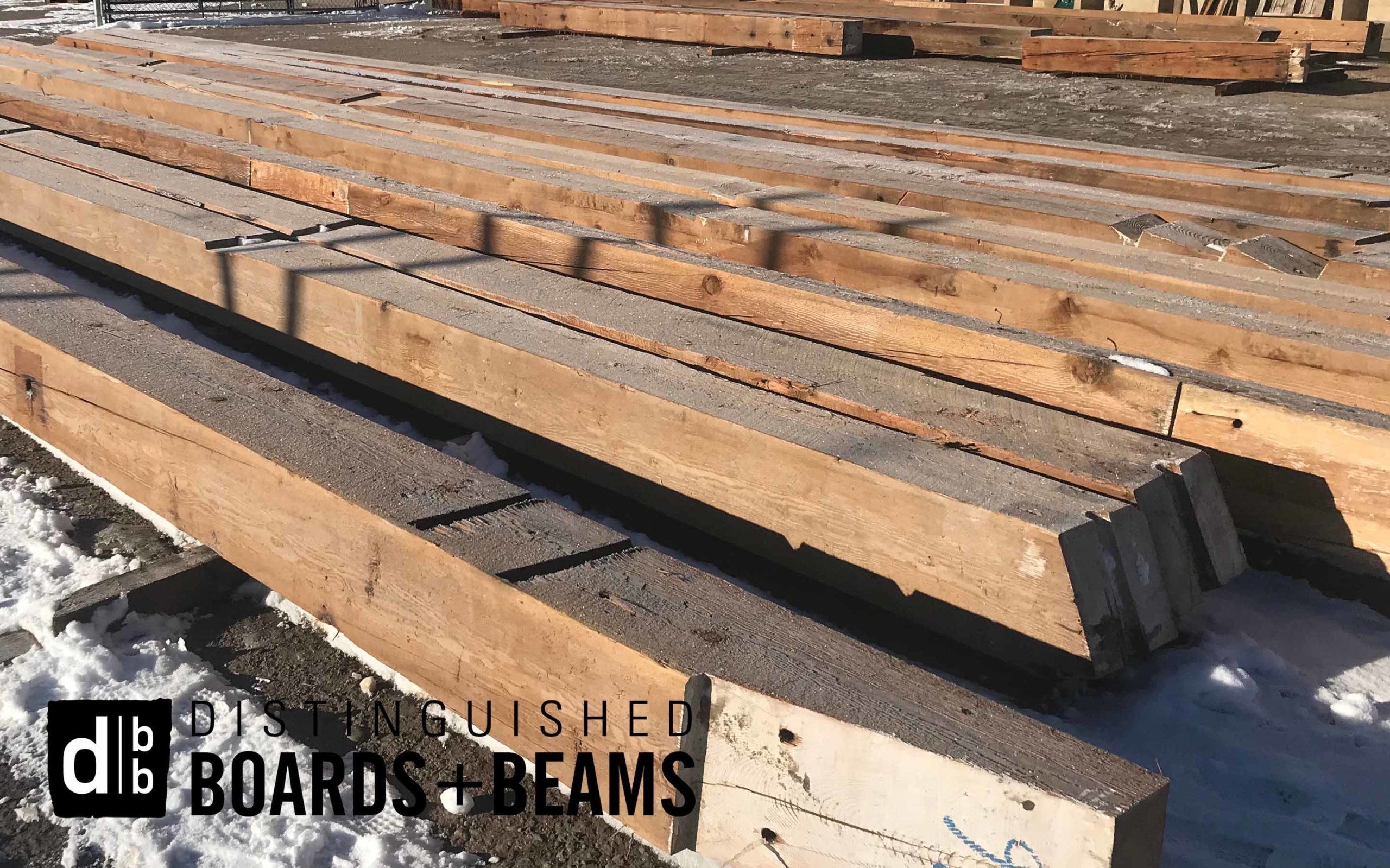
Environmental Responsibility
Why not save our remaining old growth Douglas fir trees by using reclaimed timbers in your next project? Once train-driven shipping was established from the West Coast during the industrial era, old growth Douglas fir timbers were used to build much of the timber-framed homes, barns, factories, schools, etc. of the age. Now that many of these heritage structures are being replaced with new architecture, there is an abundance of Douglas fir timbers that are readily available in old growth dimensions and naturally air-dried, ready for installation. These timbers have not only become more beautiful and usable with age but embody a piece of American history.
Original Patina Smooth Planed Timbers
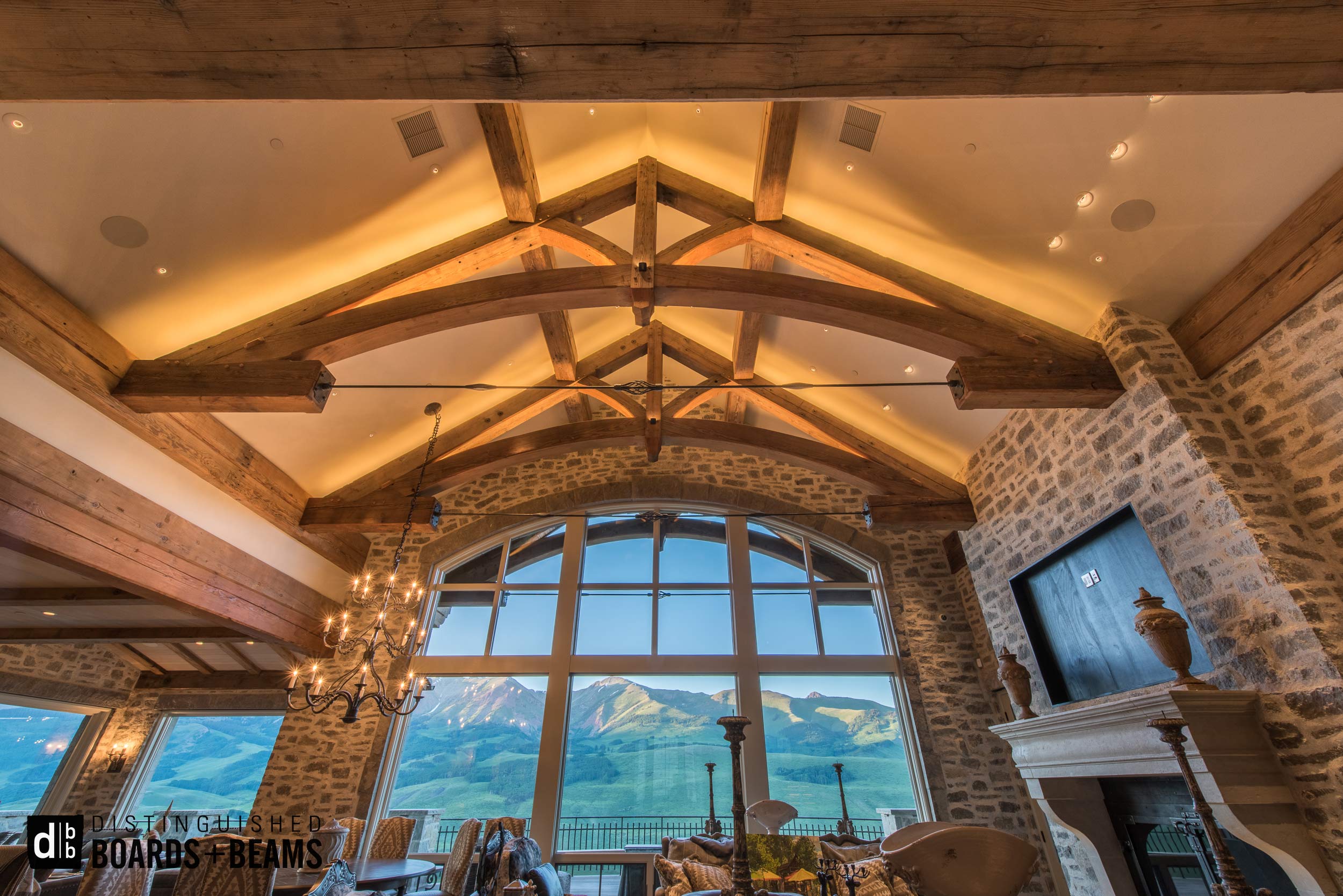
Original Patina Rough Sawn Timbers
Rough Sawn Dimensional Lumber
Dimensional lumber is rich chocolate brown with visible circle or band saw marks. Species include a variety of hardwoods and softwoods: oak, elm, ash, beech, maple, pine, and Douglas fir. These boards reclaimed from historic structures are useful for a number of applications, such as exposed interior framing or chinked siding.
Dimensions available:
2" X 4-12", 3" X 4-13", and 4" X 6-16".
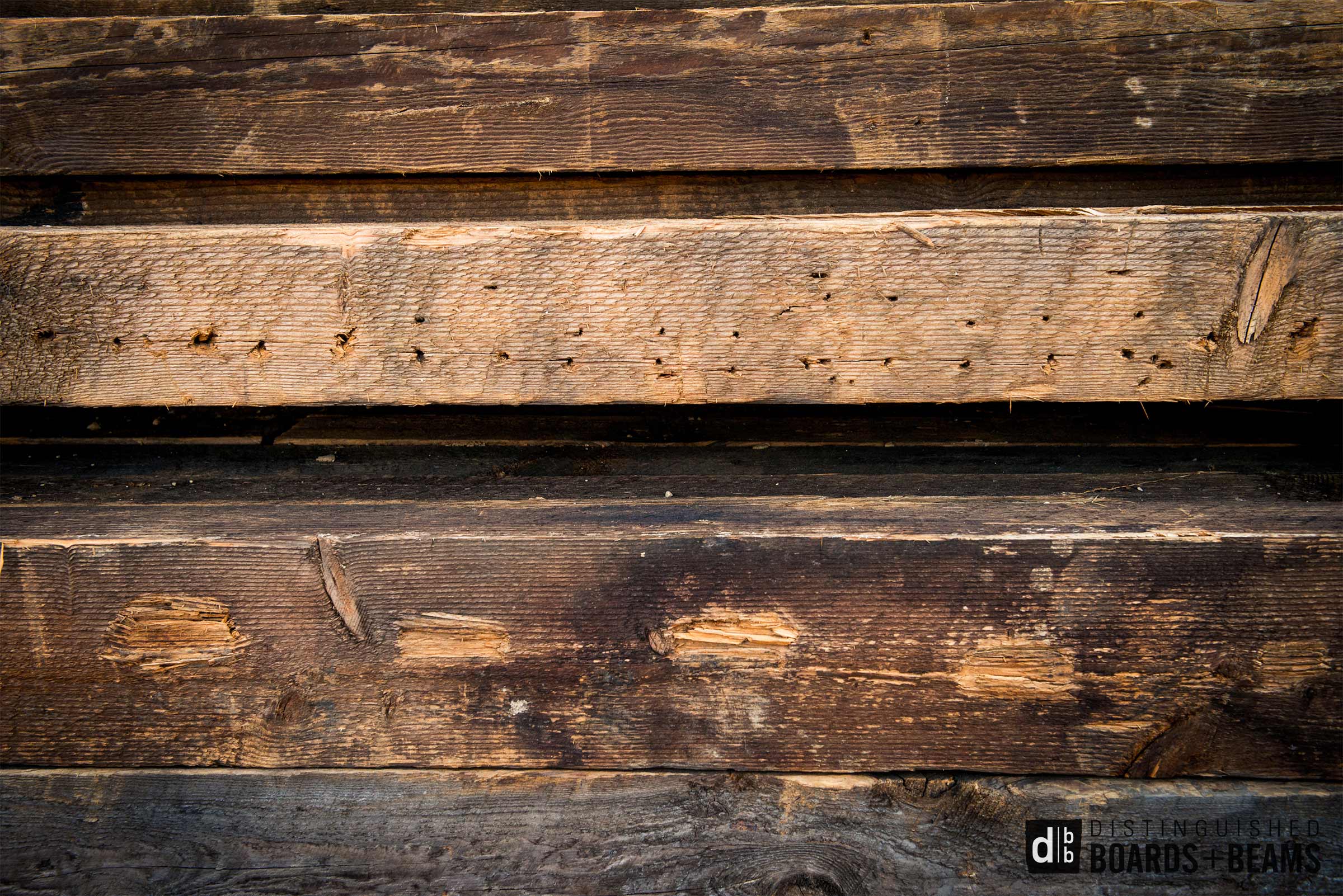
Original Timber-Frame Components
Our timbers come from a variety of traditionally timber-framed structures, carefully deconstructed by our team and shipped to our facility in Carbondale. Timber-framers take our reclaimed old growth timbers and form them into truly magnificent works of architecture. The following are a few of the most common timber-frame components that we reclaim.
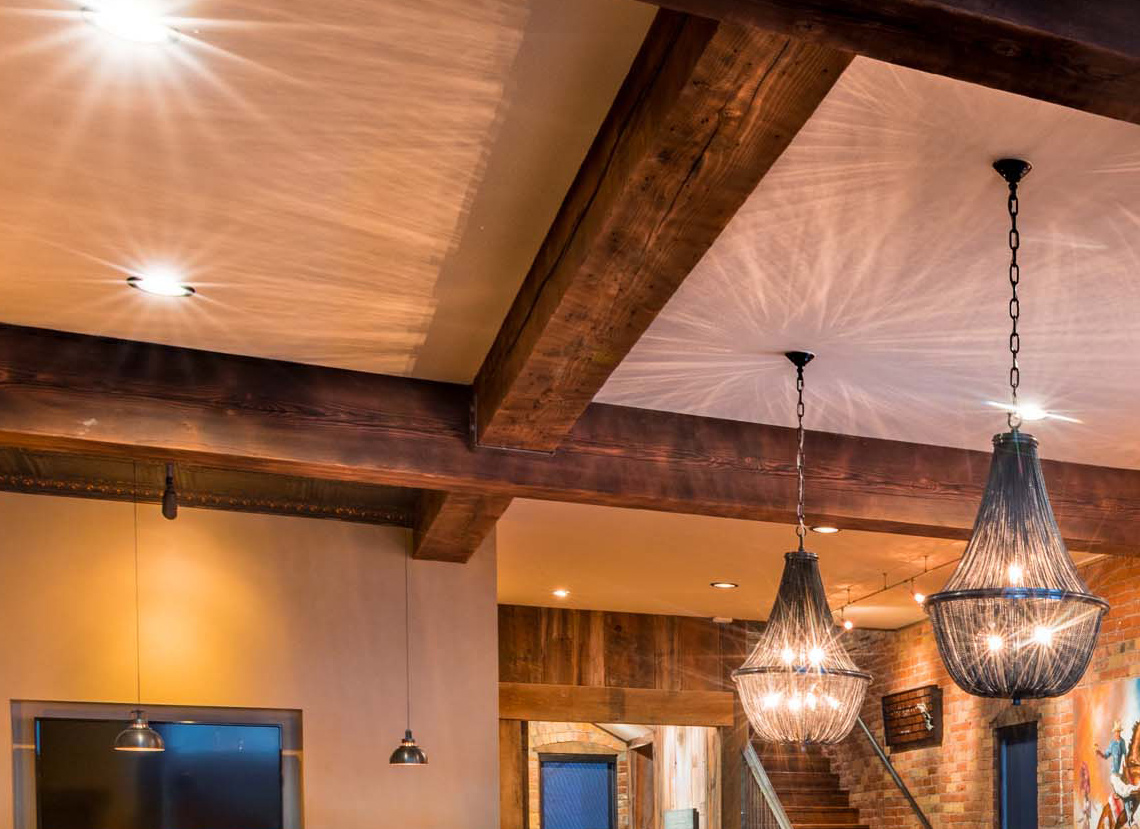
Beams
We have beams that were used as plates, struts, sills, ties, and swings. Swing beams are typically the largest; they span the entire width of a barn and allow threshing floors to not be interrupted by center posts. They also create areas where livestock and wagons can move within a barn.

Posts
We stock corner, side, end, interior, and king posts. King posts serve as the center support timber for trusses and geometric frameworks.
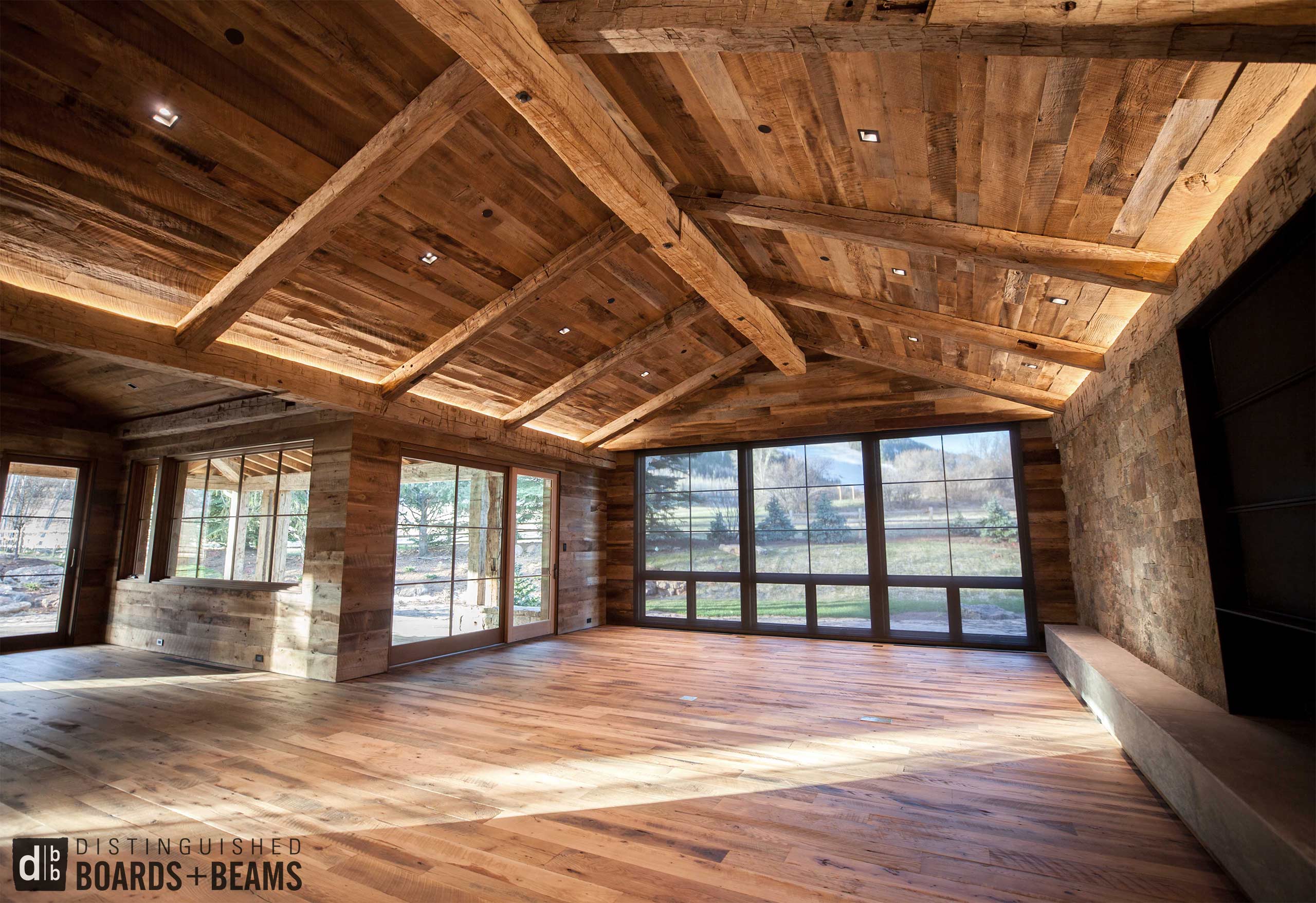
Rafters
Rafters form the roof's support system, join with ridge beams, and also play a key role in tying into truss systems.
Custom Milling Options
S4S Reclaimed Douglas Fir Timber Frame
Burned, Re-sawn Douglas Fir
Traditional Timber Framing Techniques
Before the age of the steel I-beam, massive old growth timbers formed the integral structure of heritage barns. It’s relatively easy to know when a barn was built and the technology that was available at the time by looking at the surface texture of a barn’s timbers and beams.
Staggered score marks on a timbers’ surface indicates that it was hand-hewn; a broad axe was used to chip and chisel away the round edges of a log, and then an adze was used to further flatten it into a useable shape. Circle and band saw marks are indicative of barns built in the following eras. When building a barn’s frame, timbers were joined together using one of two different architectural configurations: timber-frame or post and beam.
The difference is simple. Timber-frame barns were built without the aid of metal plates or bolts; instead, traditional joinery techniques were used, such as mortise and tenon, bird-mouth, and tongue and fork. Post and beam architecture was a later development that utilized metal plates or bolts to join timbers and beams. The various markings on our magnificent timbers and beams personify America’s heritage, while displaying rich character, sophistication, and elegance.
